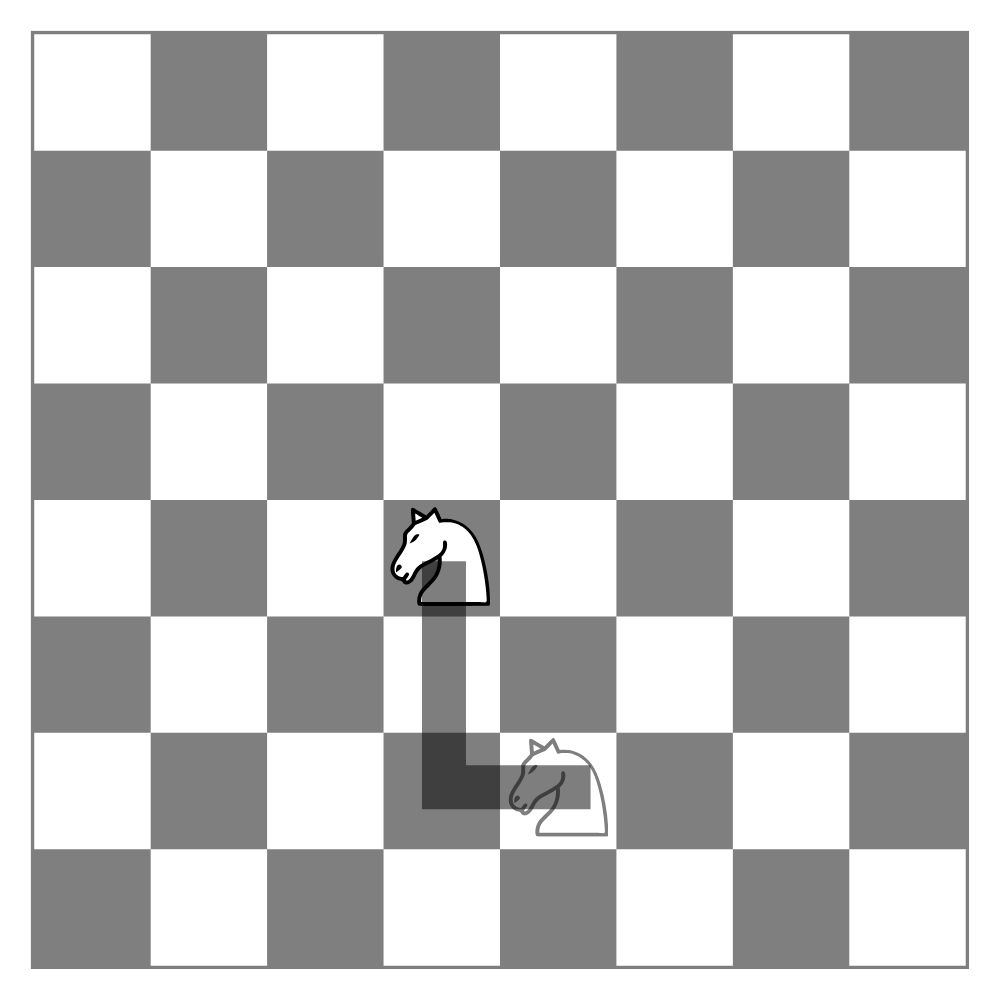To understand the knight is to appreciate its unpredictability. Unlike any other piece, the knight leaps across the board in an L-shaped pattern—two squares in one direction and then one square perpendicular. It’s the only piece that can jump over others, which makes it valuable in closed positions and early game development.
How Does a Knight Move in Chess?
- L-Shape Movement: A knight moves two squares in one direction—horizontal or vertical—then one square at a right angle. Think of it as forming an “L” on the board.
- Jumping Ability: The knight can leap over other pieces. That makes it particularly useful in crowded board positions and can be quite confounding for opponents to predict since it is not a direct line of sight maneuver like the other pieces on the board.
- Capturing: The knight lands on the square of its target piece to capture it. Unlike other pieces, it doesn’t need a clear path—just a clear destination.


Tip: When trying to determine a move for the knight, keep in mind it will always land on the opposite color of where it is being moved from. So if you are on black, the only options on that move will be a radius of white spaces.
Can Knights Move Backwards or Diagonally?
- Yes, But Only in L-Shaped Patterns: The knight’s unique movement lets it move “backward” or “diagonally” in a sense, but only as part of that two-plus-one shape. It can’t move in a straight line.
Strategic Uses of the Knight
- Forking Power: Knights are excellent at forking—attacking two (or more) pieces at once. Because of their unusual movement, knights often sneak into positions where opponents are caught off guard.
- Strong in Closed Games: When the board is cluttered and long-range pieces like bishops and rooks are restricted, this is where knights thrive.
- Outposts: A knight planted deep in enemy territory, especially if it can’t be chased off by pawns, is often a game-winning asset.

